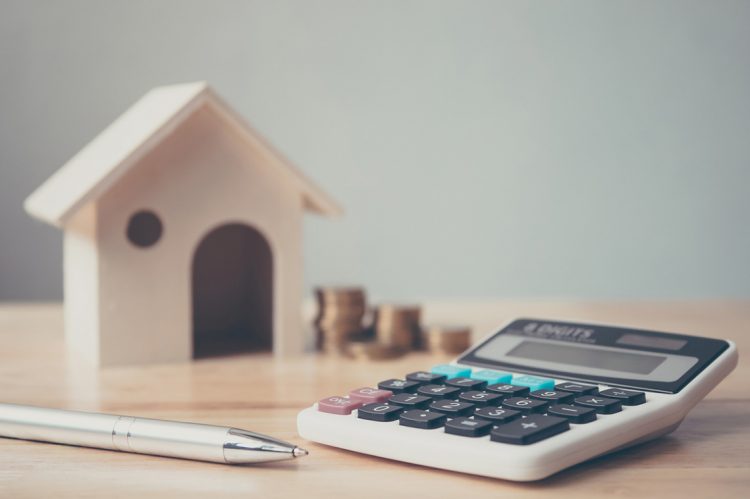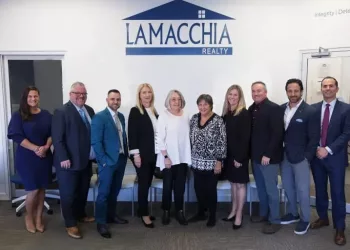In Q3 2022 48.5% of mortgaged residential properties in the United States were considered equity-rich, meaning that the combined estimated amount of loan balances secured by those properties was no more than 50% of their estimated market values, as found in a new report from ATTOM released this week.
According to ATTOM’s Q3 2022 U.S. Home Equity & Underwater Report, the portion of mortgaged homes that were equity-rich in the third quarter of 2022 increased from 48.1% in the second quarter of 2022 and from 39.5% in the third quarter of 2021. Additionally, at least half of all mortgage-payers in 20 states were equity-rich in the third quarter, compared to only seven states a year earlier.
The report also found that just 2.9% of mortgaged homes were considered seriously underwater in Q3 2022, with a combined estimated balance of loans secured by the property of at least 25% more than the property’s estimated market value. The latest seriously underwater figure was the same as the 2.9% recorded in the prior quarter, but down from 3.4% in Q3 2021. Overall, 94.3% homeowners paying off mortgages had at least some equity built up, compared to 92.9% a year earlier and 87.7% in 2020. Across the country, 39 states saw equity-rich levels increase from Q2 to Q3 2022, while seriously underwater%ages dipped in 38 states. Year over year, equity-rich levels rose in all 50 states and seriously underwater portions dropped in 43 states.
Key highlights:
- Nine of the 10 states where the equity-rich share of mortgaged homes increased most were in the Midwest, Northeast and South regions of the U.S. The biggest increases were in South Dakota (up from 36.7% to 41.8%), Vermont (up from 71.4% to 75.9%), Montana (up from 48.1% to 51.5%), Indiana (up from 43% to 46.2%) and Mississippi (up from 29.1% to 31.5%).
- The top five states where the equity-rich share of mortgaged homes decreased the most were all in the West, led by Idaho (down from 69.5% to 65.8%), California (down from 63.1% to 60.6%), Utah (down from 64.3% to 62%), Washington (down from 63.2% to 61%) and Arizona (down from 64.8% to 63.4%).
- The top 10 states with the biggest decreases in the percentage of mortgaged homes considered seriously underwater were spread across the Midwest, Northeast and West. They were led by Wyoming (down from 7% to 2.9%), Montana (down from 3.9% to 3%), Kansas (down from 5.7% to 4.9%), Indiana (down from 3.8% to 3.1%) and Connecticut (down from 3.3% to 2.8%).
- States where the percentage of seriously underwater homes increased the most were concentrated in the West, with the largest were in Mississippi (up from 8.1% to 9%), California (up from 1% to 1.4%), Idaho (up from 1.6% to 1.9%), Hawaii (up from 1.3% to 1.5%) and Washington (up from 1% to 1.2%).
- Among 107 metro areas around the nation with a population greater than 500,000, both the West and South dominated the list with the highest portion of mortgaged properties that were equity-rich. All but one of the top 25 were in those regions, led by Austin, Texas (71.6%); Sarasota-Bradenton, Florida (71.6%); San Jose, California (70.6%); Fort Myers, Florida (68.5%) and Tampa, Florida (68.3%).
- Eighteen of the 20 metro areas with the lowest percentages of equity-rich properties were in the Midwest and South. The smallest levels were in Baton Rouge, Louisiana (20.6%); Jackson, MS (23.4%); Wichita, Kansas (26.1%); Little Rock, Arkansas (27.4%) and Virginia Beach, Virginia (27.9%).
- The portion of mortgaged homes considered equity rich rose from the second quarter of 2022 to the third quarter of 2022 in 72 of the 107 metro areas with sufficient data (68%), while the level of mortgaged homes considered equity rich rose annually in 105 of the 107 (99%).
- Only about 227,100 homeowners were facing possible foreclosure in the third quarter of 2022, or just four-tenths of one percent of the 58.1 million outstanding mortgages in the U.S. Of those facing foreclosure, about 208,700, or 92 percent, had at least some equity built up in their homes.
Major takeaway:
“Even though home price appreciation has slowed down dramatically in recent months, homeowners have continued to build equity,” said Rick Sharga, executive vice president of market intelligence at ATTOM. “And it appears that many of those homeowners have decided to stay where they are rather than purchase a new home, and are beginning to tap into that equity, as the number of home equity lines of credit (HELOCs) issued in the second quarter of 2022 rose by 43% from the prior year.”
Sharga noted, “One of the reasons we don’t believe there will be another huge wave of foreclosures is that the overwhelming majority of financially-distressed homeowners do have positive equity. If these borrowers can’t leverage the equity to refinance their current mortgage, they at least have the option of selling the property rather than losing their equity to a foreclosure auction. This option wasn’t available to distressed borrowers during the Great Recession, when many borrowers were underwater on their loans.”
For the full report, which has more statistics about home equity and underwater mortgages across counties and zip codes, click here.












